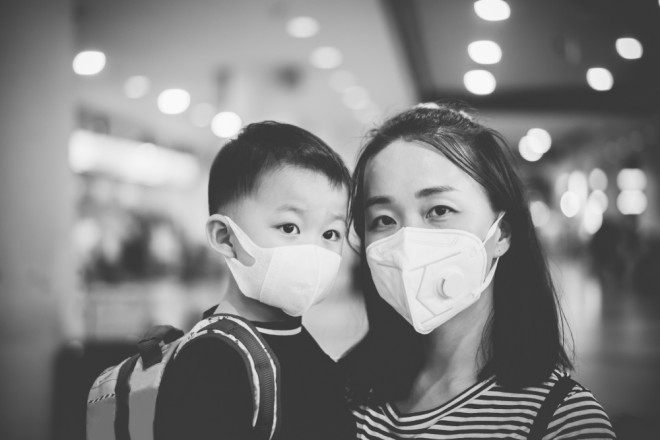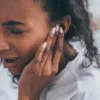What is the coronavirus? What are the symptoms, how is it transmitted, who is most at risk? Read below for everything you need to know about the coronavirus.
You are interested what is the coronavirus, what are the symptoms, how is it transmitted, who is most at risk? We have searched for the information you need to know about the coronavirus. (Sources: NIJZ, Wikipedia, WHO)
What is the coronavirus?
The coronavirus appeared in December 2019 in Wuhan, China. The new coronavirus has been named by the WHO (World Health Organization). SARS-CoV-2, a disease caused by a virus COVID-19. The new strain of the virus from Wuhan belongs to betacoronaviruses, group 2B, and shows about 70% genetic relatedness to Sars virus (SARS-CoV). The cases were initially linked to the detention of seafood and other animals in a market in Wuhan. It is suspected that he is the source of infection (which has not yet been identified) is one of the animal species.
Although coronaviruses were discovered in the 1960s, other representatives of coronaviruses were discovered in 2003 SARS-CoV (the causative agent of Sars), discovered in 2004 HCoV NL63, discovered in 2005 HKU1, discovered in 2012 MERS-CoV (the causative agent of Mersa – camel flu). Newly discovered coronaviruses, unlike older coronaviruses, can also cause very severe respiratory infections.
In Europe, the most worrying situation at the moment is with our western neighbours, in Italy (in the regions of Lombardy, Veneto, Emilia Romagna, Piedmont and Rome), where by February 23, 150 people had contracted the coronavirus, 3 had died. European Center for Disease Prevention and Control (European Center for Disease Prevention and Control – ECDC) daily updates data related to the SARS-CoV-2 coronavirus and is available at the following link (in English): ecdc.europa.eu.

How is the coronavirus transmitted?
Now that you know what is coronavirus, but let's see how it transfers. The new coronavirus is transmitted between people drop by drop. This means that it is required to download closer contact with the patient, the distance to the patient is a meter and a half. It is possible to get infected with the new coronavirus upon contact with contaminated surfaces, but it has not yet been reliably proven, they wrote at NIJZ.
Although it has not been proven that the new coronavirus is transmitted through the air (aerogenic), it is advised caution and protection in case of particularly risky interventions in a medical institution. Staying in the same room with the patient (if we are at a distance of one and a half meters) does not pose a risk.
What are the symptoms of the coronavirus?
On the question what is the coronavirus and how is it transmitted, we have already answered, now let's look at the symptoms. NIJZ wrote that the disease is manifesting itself with fever, cough, malaise, fatigue, nausea and a feeling of lack of air, which is common for pneumonia. It is to confirm or rule out infection with the new coronavirus microbiological testing required. The coronavirus can be detected in nasopharyngeal swabs, pharyngeal swabs, respiratory secretions, and other infectious materials. The incubation period of the virus is between 2 and 12 days, an average of 6 days.
A milder form of infection is said to occur in 80 percent of people, About 20 percent of those affected are said to have a more severe form. There is no exact death rate yet, but according to China, it is estimated at 2 to 4 percent of those infected. Most are elderly who already have chronic diseases of the heart, lungs, diabetes, etc. Anyone can get sick, but the most at risk are the elderly, children and smokers.
How to prevent infection with the coronavirus?
Yes it will coronavirus stayed as far away from us as possible, we have to take care of it ourselves, namely with daily preventive measures. What should we consider?
- We wash our hands regularly with soap and water.
- We avoid close quarters with people who show signs of an infectious disease.
- We do not touch our eyes, nose and mouth.
- If we get sick, we stay home.
- We ensure regular ventilation of closed spaces.
- We avoid closed spaces where a large number of people stay.
- Before coughing/sneezing, cover your mouth and nose with a tissue. Cough/sneeze into the upper part of the sleeve. Throw the handkerchief in the bin after each use. After coughing/sneezing, wash your hands with soap and water.
- If soap and water are not available, use a dedicated hand sanitizer (at least 60% alcohol content) to disinfect your hands.
Face protection mask
Since the coronavirus is transmitted by droplets, it is also necessary to protect your face. This is where they come in face masks. With these, it is very important that they are positioned correctly, i.e. that they cover both the mouth and the nose. When they get wet, they no longer offer protection, so they need to be replaced with new ones. Currently, the supply of these masks in Slovenia is very limited or it is not possible to buy them at all. We've looked into where we can get them, and the biggest selection is here.
How is the coronavirus treated?
For the coronavirus there is no antiviral drug, just like thato there is no vaccine. This means that the treatment is symptomatic. Medicines are being tried ease the patient's problems, it also tries to replace the function of the organs. If the lungs are more severely affected, the patient is mechanically ventilated, oxygen is added, fluid is replaced, etc.
More information:
nijz.si






